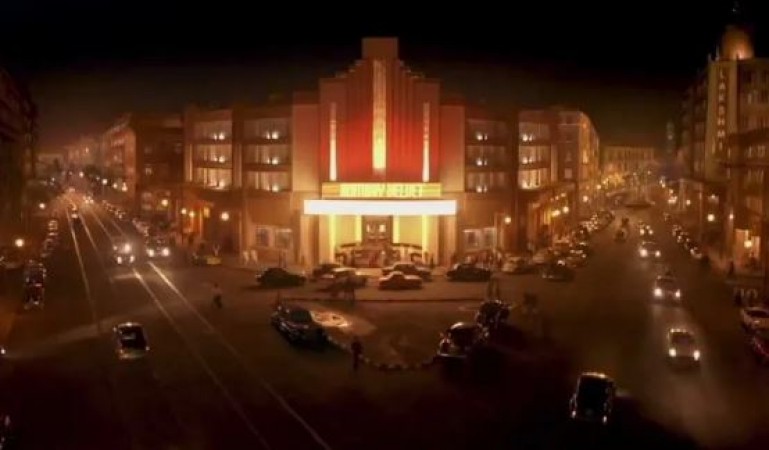
Bollywood movie "Bombay Velvet," directed by Anurag Kashyap, was released in 2015 and is renowned for its lavish production values, attention to historical accuracy, and compelling storyline, which is set in Bombay (currently Mumbai), India, in the 1960s. The fact that a significant portion of this film was not shot in the busy streets of Mumbai but rather in the picturesque landscapes of Sri Lanka adds to its intrigue. This article delves into the intriguing tale of Sri Lanka's crucial contribution to capturing the spirit of Bombay in the 1960s for the movie "Bombay Velvet."
In Bombay's history, the 1960s played a crucial role. It was at this time that Mumbai was rapidly changing from a post-colonial port city to the thriving metropolis it is today. With great care and attention to detail, the creators of "Bombay Velvet" attempted to faithfully capture this exciting era, down to the period clothing and architecture.
Mumbai still has some of the 1960s' colonial architecture, but shooting there presented a number of difficulties for the filmmakers. Finding untouched locations that accurately reflected the time period was difficult because urban sprawl had significantly changed the cityscape. Additionally, it can be difficult to coordinate logistics and secure permissions in a bustling city like Mumbai.
On the other hand, Sri Lanka provided a spotless backdrop that closely resembled Bombay in the 1960s. The architecture of the nation, with its colonial influences, lush scenery, and immaculate beaches, provided the perfect setting for reenacting the time. In addition, Sri Lanka provided the filmmakers with a cooperative and film-friendly environment, making it a desirable option for their production requirements.
It was nothing short of amazing how locations in Sri Lanka were transformed into 1960s Bombay. The film's art direction team, under the direction of Sonal Sawant, put in a lot of effort to construct a time machine that whisked viewers back to a period of jazz clubs, lavish ballrooms, and seedy streets.
The "Bombay Velvet" jazz club serves as one of the movie's key locations. A meticulous set was built in Colombo, Sri Lanka, to replicate the smoky, dimly lit atmosphere of a 1960s jazz club. From the antique instruments to the vintage vinyl records, the attention to detail was astounding.
Colonial Architecture: Sri Lanka's colonial architecture closely resembled Bombay in the 1960s and was influenced by British and Portuguese styles. The production team chose appropriate structures and enhanced them with historically accurate details to take viewers back in time.
Fashion and Costumes: The 1960s era's attire was crucial to the film's authenticity. Niharika Khan and Rosie Kunwar, who created the costumes, combed through vintage shops and worked with local tailors to recreate the fashionable and glitzy clothing of the time, from sharp suits to elegant dresses.
Street Scenes: Even Sri Lanka's busy streets were changed to look like Bombay in the 1960s, which were chaotic but charismatic. In order to capture the spirit of the era, vintage cars, street vendors, and billboards were placed in strategic locations.
Filming a major Bollywood production abroad presents its share of difficulties, but the team behind "Bombay Velvet" handled them with impressive speed.
Organising the logistics of a high-budget movie in another nation is no simple task. But the Sri Lankan government and local authorities were helpful, speeding up the procedure for obtaining the required permits and facilitating efficient shooting schedules.
Language Barrier: When making international films, language can be a barrier. However, Sri Lanka's English-speaking population and the availability of translators made it possible for the Indian crew and local talent to communicate effectively.
Local Talent: To further enhance the authenticity of the setting, the filmmakers cast local actors in a variety of roles. Sri Lankan actors played characters that gave the story depth while blending in seamlessly with the narrative.
The movie "Bombay Velvet" is proof of the power of film and the commitment of creators to capturing a bygone era. Even though the movie received some negative reviews, it is impossible to deny the breathtaking visual spectacle it provided with its painstakingly designed Sri Lankan sets. With its welcoming culture and colonial architecture, Sri Lanka made for an ideal location for filming, giving the directors the ability to convincingly transport viewers to Bombay in the 1960s.
The movie "Bombay Velvet" serves as a timely reminder of the value of physical sets and locations in establishing a sense of place and time in a world where CGI is widely used in the film industry. The power of international cooperation in the world of cinema is demonstrated by Sri Lanka's role in bringing the nostalgia of 1960s Bombay to life on the silver screen.
"Bhai Batoor" and Its Lasting Impact on Bollywood
'Padosan' and Its Modern-Day Adaptation in 'Nayee Padosan'
"Bemisaal" and "Angoor": A Tale of Twists and Turns at the Box Office